
Seodaemun…..
Seodaemun is the area just to the west of Kyeongbokkung Palace. It was important for me to go because the West Gate of Seoul was here and that long, beautiful mountain with all the granite on it, InWangSan, was here as well. The day we decided to go to the area, we found ourselves near the west gate, and a few young Korean people came out of nowhere to say we should really come and see a museum that was right there. They worked at the museum, apparently. I got the impression they had been told it was better to recruit foreign tourists to see this museum. No wonder. This was the most interesting museum I’ve ever heard of. We followed those Korean people to the entrance as we did have time to go and it only cost around a dollar each to get in!
Seodaemun Prison Museum…
It was the Seodaemun Japanese Prison Hall. This was a testimony to the last time that Japan had taken over Korea. And it was like we had the whole complex to ourselves, as we seemed to be a few of the only people there. A young Korean staff-member showed us parts of the place and gave us a lot of explanations.

For around 30 years from something like 1915 to 1945, Japan had ruled Korea and they kept Koreans who were freedom-fighters or who refused to submit in this prison. One thing I was surprised about was that one of the main prisoners was a woman. There was a mannequin in a tiny dark cell that was supposed to be her and we could look into this cell to see how she was forced to live. The most amazing thing to us was a display room with a mannequin who was supposed to be a Japanese guard watching a prisoner being tortured. The guard was moving in his chair, rocking with enjoyment, and holding a lit cigarette. He was relaxing and had his legs and feet up on the table in front of him. It was very lifelike and also was another way that showed how the Korean people created their elaborate museums.
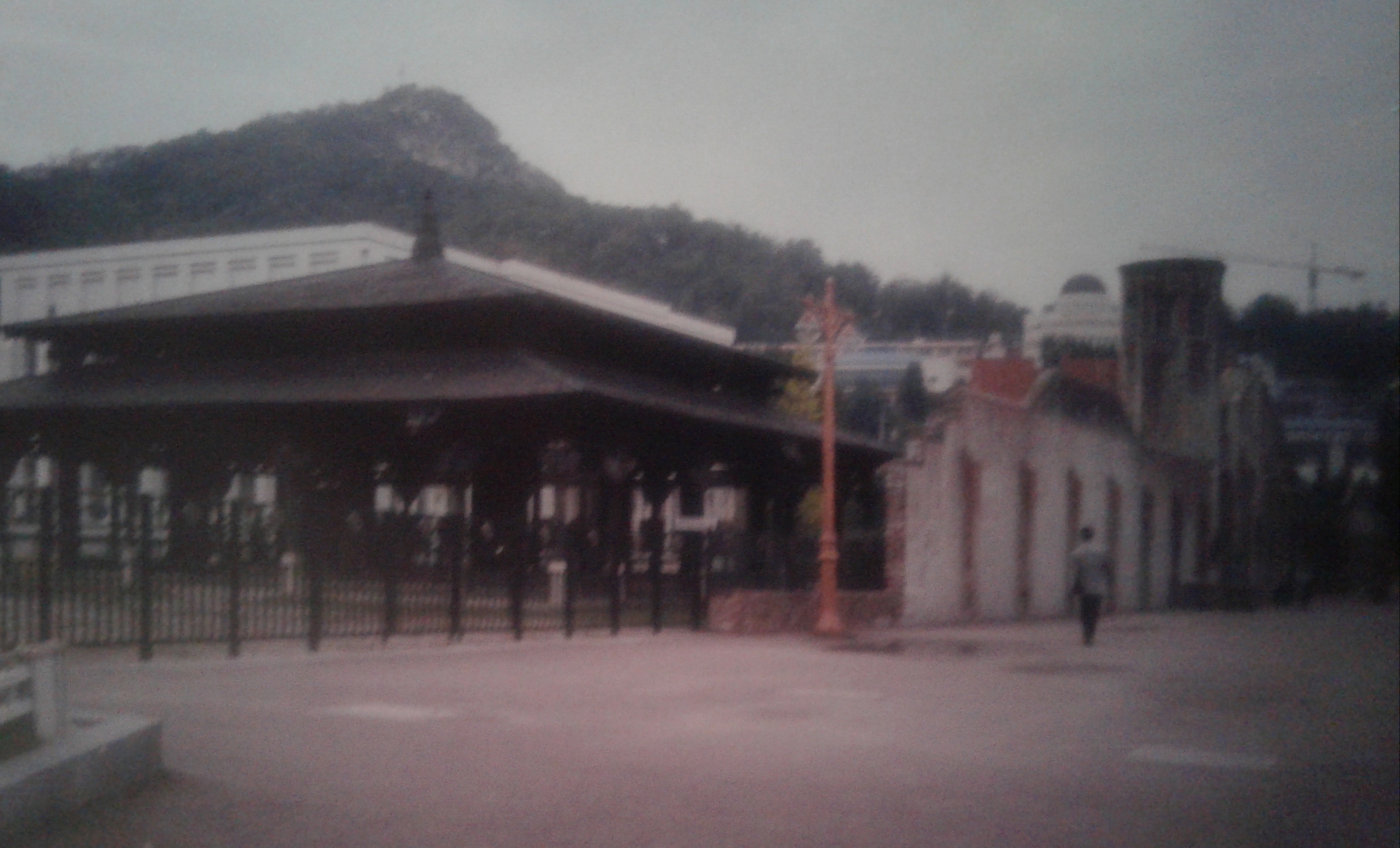
When we came out of the exit, the huge, looming InWangSan mountain greeted us, and I was so thrilled to be so close to it that I took a picture of it showing the granite design it had that looked like an ink painting.

Tongnimmun….
I found the West Gate, also called Tongnimmun, near the Japanese Museum. It wasn’t like the other tiled-roofed gates, and was the first western-style structure built in Korea, modelled after the Arc de Triumphe in Paris. There is a picture in existence of the original gate that was destroyed before this one was built and the gate is not like this one. It looks more traditional. The old west gate was used by Chinese royalty when they came to visit Korea from the west and its 2 pillars that were left standing are in this picure behind the Tongnimmun Gate towards the overpass. This current west gate, the one I took the picture of below, called Tongnimmun, is called Independence Gate, signifying independence from China as well as Japan. People weren’t allowed to walk through Tongnimmun when I was there and you can see the iron fence around it in my photo. Nowadays people can walk under and through it and the area has been made into an Independence Park.
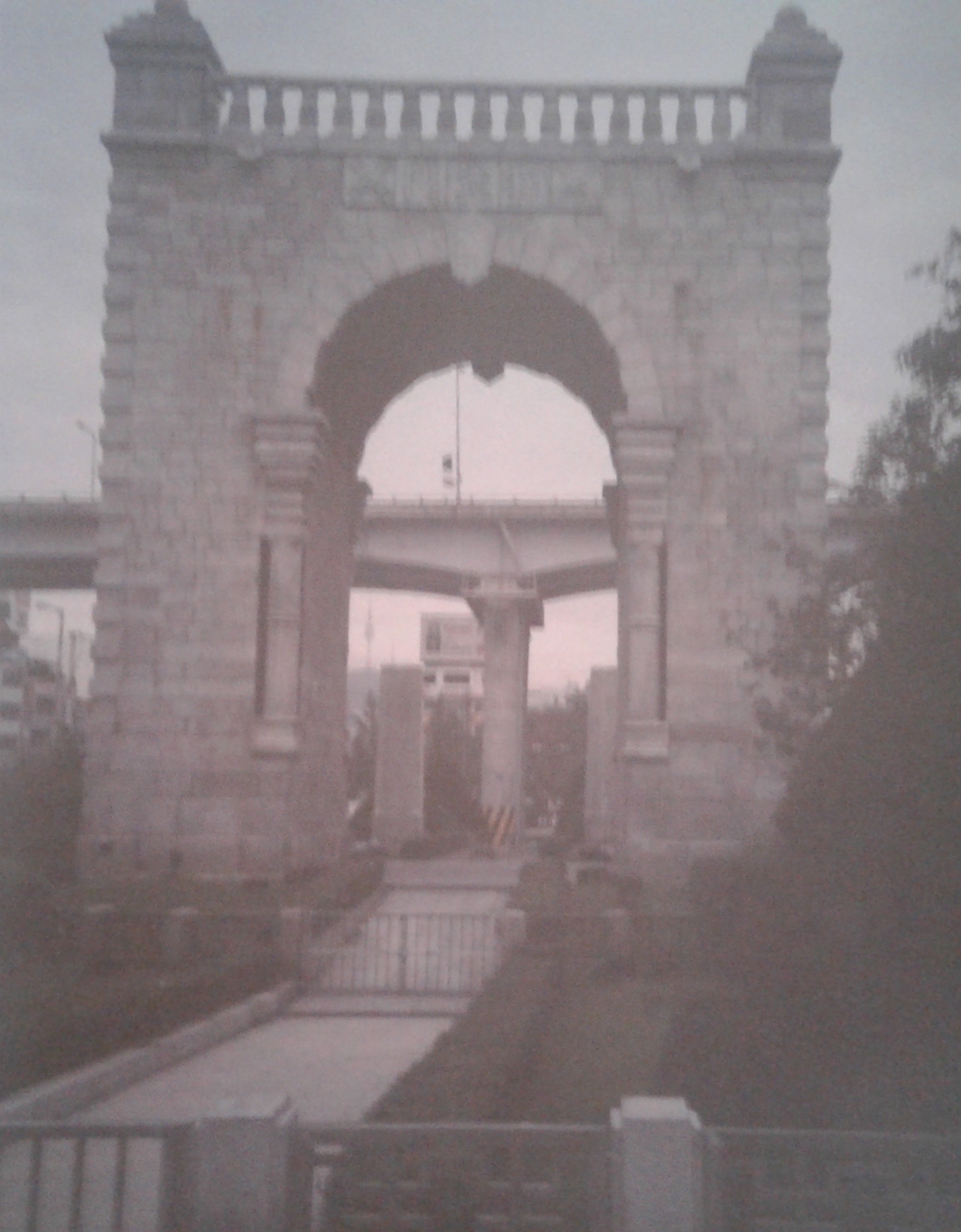
(I called it Dongnimmun because their ‘d’s are like ‘t’s in their language) It is made of cement and many pieces of granite.
Environmentally Conscious…
Even in 1997, Korea did things sensibly like save the environment in a more effective way than people do in North America. When I was living there, someone in Korea could order a delivery from a restaurant and it would come with real dishes that looked like melamine. No matter where the customer lived, after the food was eaten, the customer would put the tray with the now-dirty dishes out in the hallway on the floor outside of the door for the driver to pick up later. The dishes would go back to the restaurant and be cleaned and reused. The government there is not like people and companies in Canada where disposable dishes, usually not recyclable, are constantly used and thrown away. In Canada, one problem is that most people are not honourable enough to not steal the real dishes. Also, companies in Canada would be unwilling to pay delivery drivers to pick up the used dishes and return with them to the restaurant. Too bad they can’t do that environmentally responsible use of dishes in the west though.
Chinese Exhibit…
JiYoung, my roomate from Karak-dong, took Robert and I to a museum in the southeast of Seoul in January of 1998 when he had visited me. It was an exhibit about China and it was huge. I remember everything was in Korean or there was no proper information to read at all, so when there was a Xian warrior on a horse in a glassed-in case, I wanted to know if it was a real clay warrior or a replica, but I couldn’t find out. I did learn that China has around 20 separate cultures and has other languages than Cantonese and Mandarian and there are many different dialects of each language as well. We don’t learn in Canada about their diverse groups within their country. At one point we saw a section which seemed to show Europeans first arriving there and the information must have said some awful things about them because after that part we were getting dirty looks from people in the crowd as we passed them on the stairs.
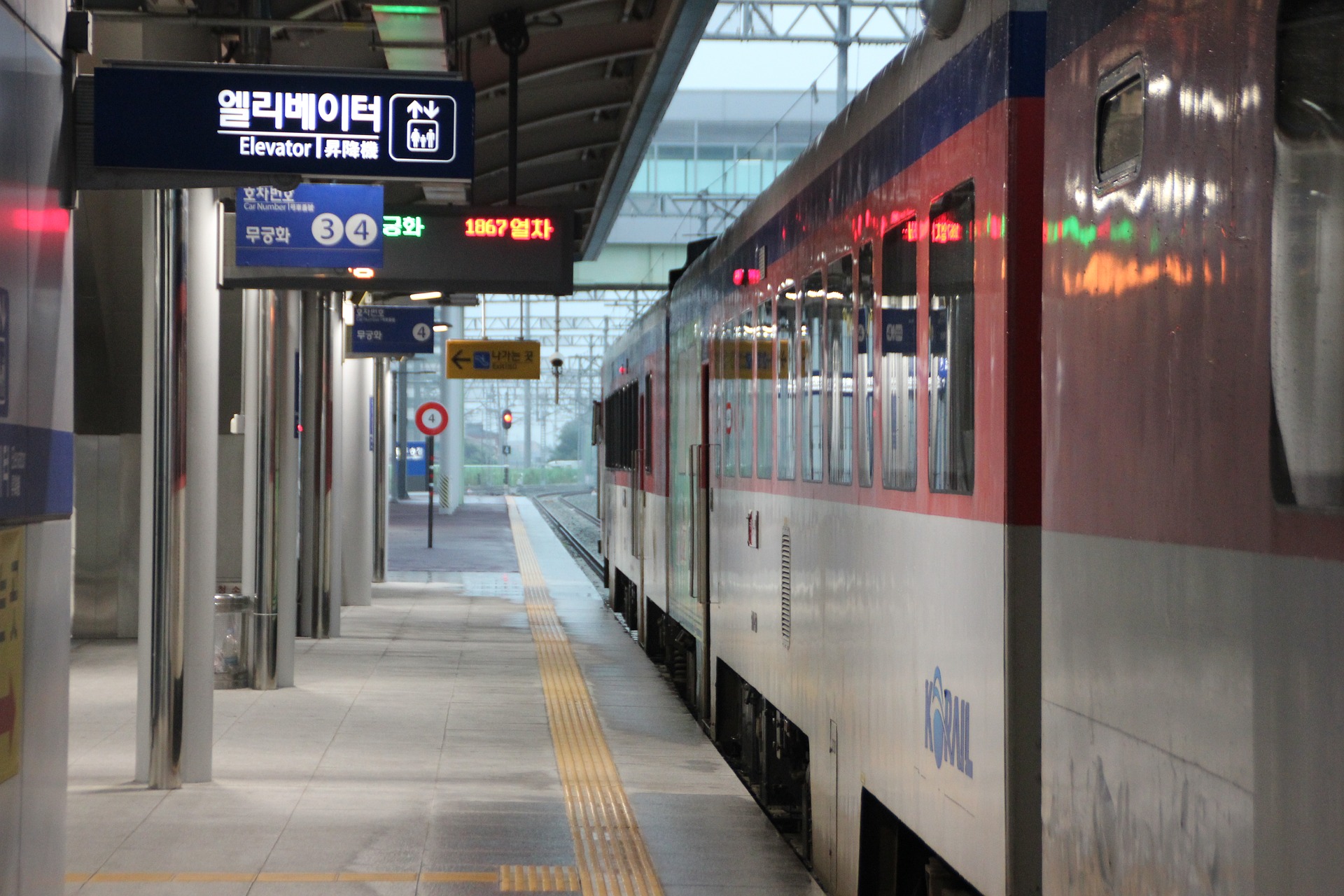
My favourite room was the one where an antique, giant, silk-embroidered banner went the whole way around the edges of a room. It was in a number of long wooden cases under glass. I looked at the intricate embroidery and it was an old scene showing peasants going about their business. The scene showed royalty too. There were animals they raised to eat and ‘ox carts’ in the streets. People having a meal in their traditional homes were depicted. One part seemed to be the emporor in palacial buildings with his servants incorporated into the scene, along with many rich Chinese ladies at a large party in another continuing section. There were trees and flowers and many details everywhere. I love Chinese art, especially very old art, so I looked at this embroidery for a long time. It was lifelike yet had that quaint look that Chinese artists used to create in their work. The fact that it was so old and all embroidered made it even more beautiful.
Outside of the large museum we saw an older Korean man cooking chestnuts at a barbecue-type stand to sell to people. Chestnuts were commonly eaten and most times they were raw. I had never eaten chestnuts in Canada, although we have chestnut trees, and I had some raw ones while I lived in Seoul. They’re very good and must be healthy too. Raw chestnuts are peeled and cut in neat geometrical designs and arranged in organised piles on ceremonial plates to have at fancy food tables during their Chuseok or Solnal meals.
Namhansanseong….
I remember being told about the NamHanSanSeong fortress wall south of Karak-dong by a few Korean students in the fall of 1997. When I planned my trip I wanted to go there. I did it the hard way, as my Lonely Planet book only explained to go by subway to a certain stop in Seongnam and then hike up the mountain there to get in the park. This was lovely but very difficult to do. It was quite steep and many Koreans were climbing as well. There was a temple on the way up but I didn’t explore as I wanted to make it to the top. After an hour and a half of climbing we came to the huge South Gate in the picture below. We went under and through it and then we walked along stone wall, which was like a mini-Great-Wall-of-China running along the top of the mountain range there.


When you walked along the wide path, you walked along the fortress, which was 500 years old. The wall was built because one of the kings had to be protected from Chinese invaders at the time, I believe, but Korea had Japanese and Mongolian invasions and threats through the years as well. You can view Seoul from the southeast at one point on this trail but we couldn’t see it well when we came upon this spot. A great thing was that a Korean man started talking to us on the walk, and stayed with us talking and walking. He was a nuclear physicist! He said he liked Celine Dion when we said we were Canadian.

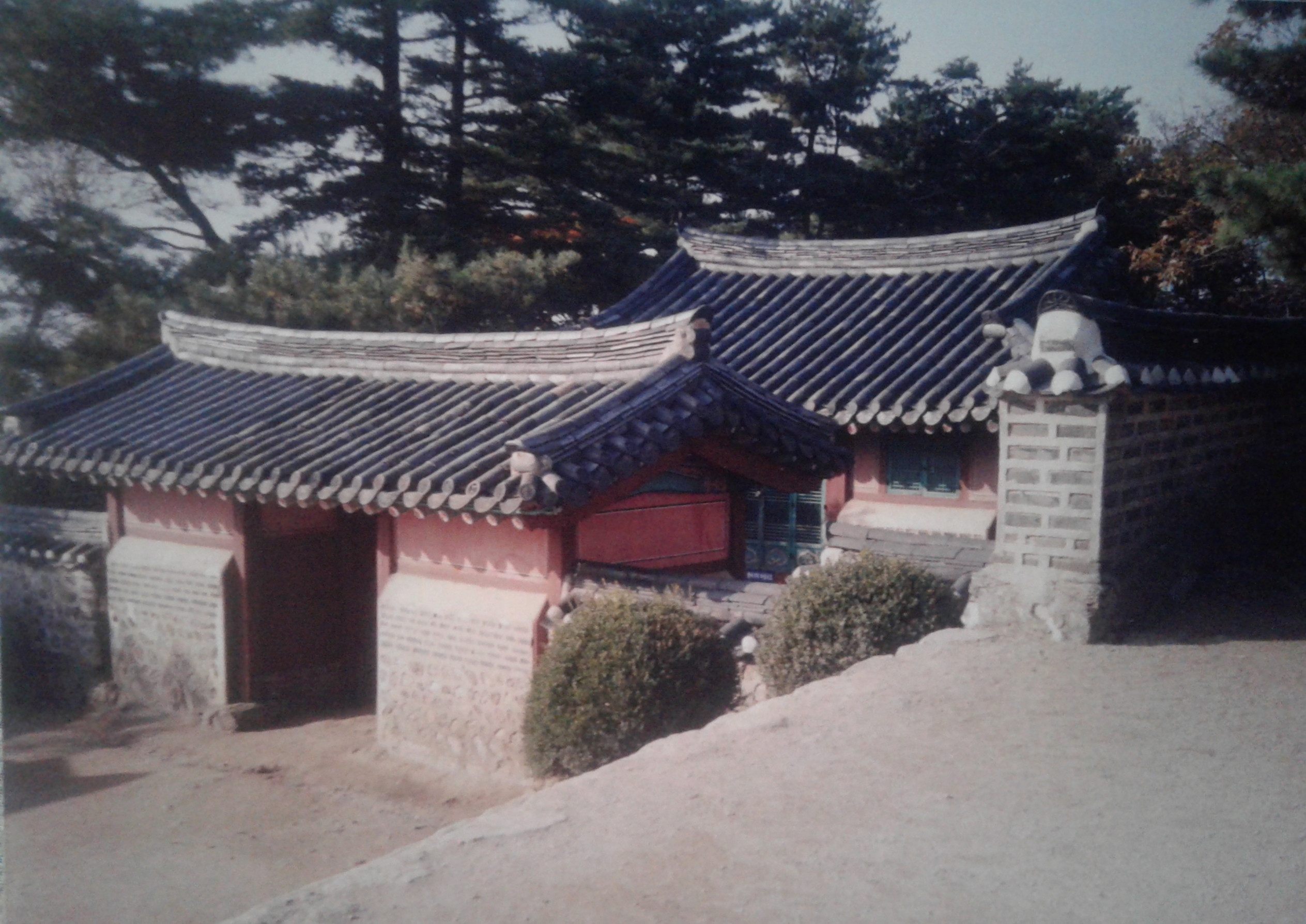


We wanted to leave the park after hiking there for a while, and the Korean man didn’t know where to go or how to get out either. I remember him saying that to us. He suggested going down another trail through the forest that headed downhill further into the park. It worked! After a time we came upon a “tourist village” where people, especially foreigners, at the park could eat a special meal or get a bus home. I wish I had known about the buses.


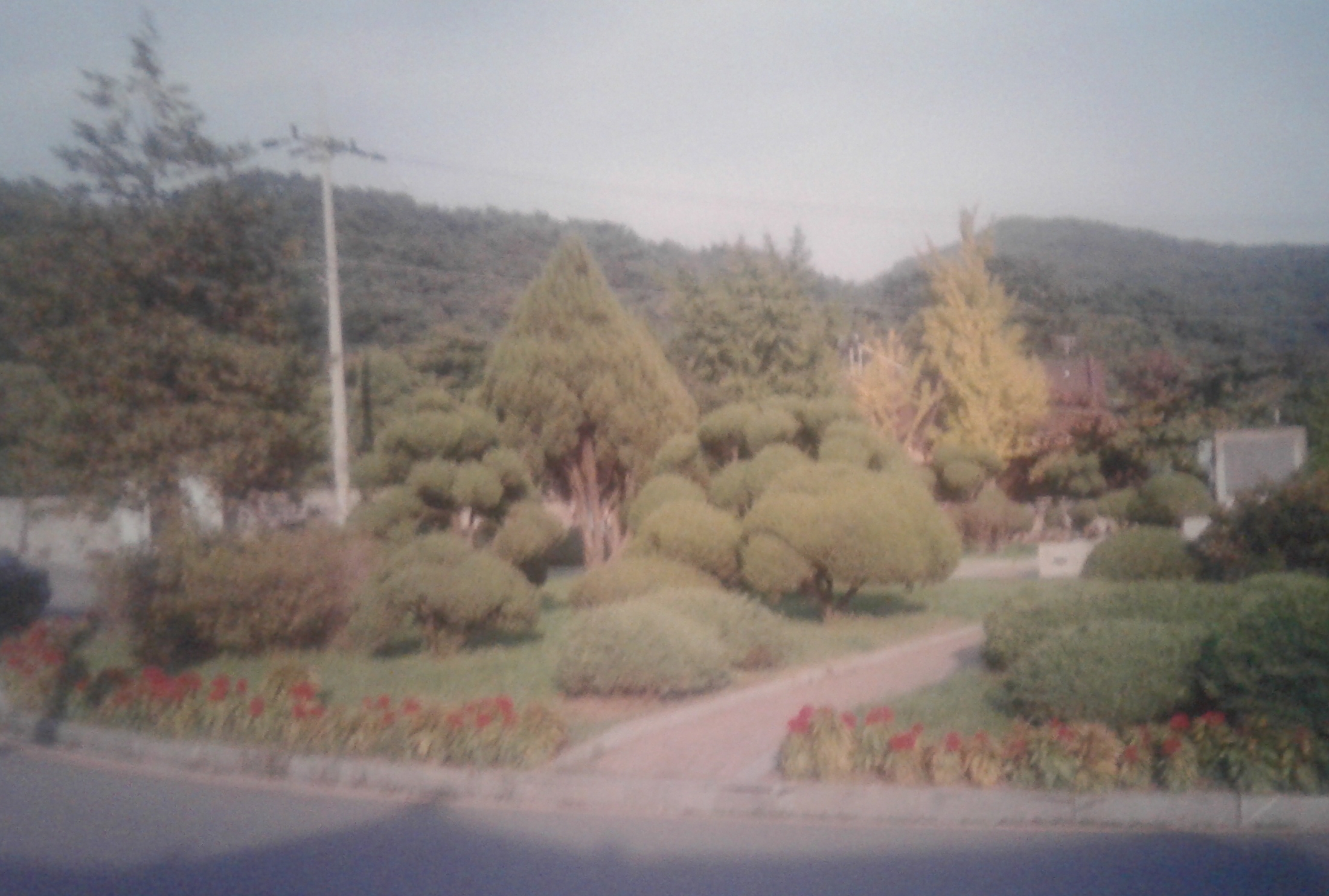
Finally, and I don’t know how he knew, but we followed the Korean man to a bus stop and he got on the bus too and told us where to get out to get the subway to get to where we were going. The people there are extremely helpful and everso curious about foreigners.

It is interesting to read your memories posted as some of them are so detailed. I had forgotten about the delivery of meals and the pick up. I didn’t have the opportunity to visit the first museum you speak of but I do remember kind of visiting the other ones posted, the UNESCO site. 1999: I was back in Florida teaching Middle School Remedial Reading and wanting to return overseas! I like your print. I remember regretting so many years later not buying a Chinese artist of two foxes crossing from North Korea. I am glad we are friends on facebook. The other day, I passed a nearby Korean restaurant and I thought of grabbing a bite for my husband and I. Thanks for continuing to post your memories. I read them and am surprised at the details you remember.
LikeLiked by 1 person
Yes, I would have liked the painting of the 2 foxes too! I only have about 2 or 3 more posts to make of Korea for now. It’s sometimes hard to get my pictures copied properly. I’m glad to be on Facebbok with you too! I love the pictures of your parents.
LikeLike